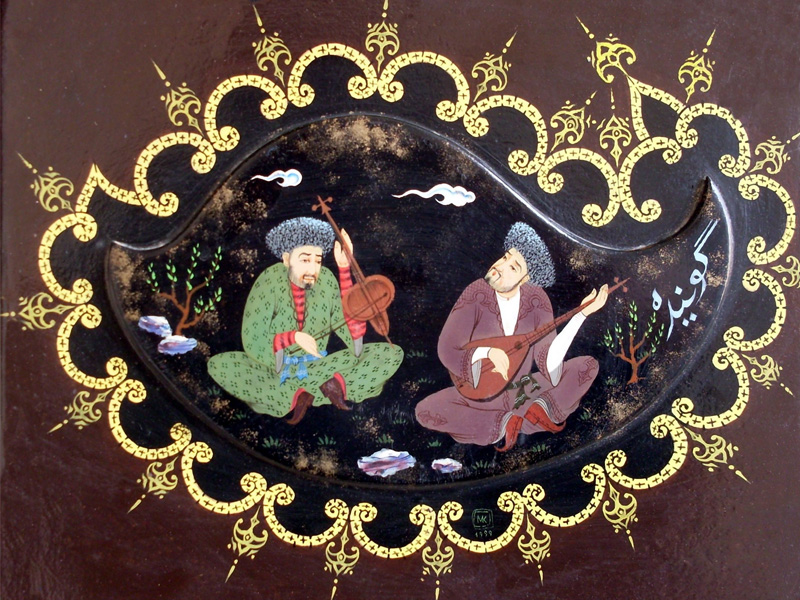



Attraction

Recreation

(18.03.1075 Zamahshar, 14.04.1144, Gurganj)
Biography
He studied at a local madrassah and after that he went to Bukhara where he studied sciences in the environment of a special constellation of those who lightened the world of science and poetry at that period of time in this sacred city. As soon as he finished his education he started to serve at the palace of Khorezmshakhs as a secretary and lawyer.
Zamahshari got sick in 1118. When he got cured he completely dedicated himself to the field of science. In order to obtain more knowledge he visited Merv, Nishapur, Ishfakhan, Sham, Baghdad and Khidjaz. He spent five years of his life in Mecca dealing with scientific work and he obtained one of the highest rewards there which was called “Jarullah”(Close to Allah).
Zamahshari died on April 14, 1144 in his hometown Khorezm. Even in the XIV century a great mausoleum was erected upon his grave. This is proved by well-known Arabian traveler and scientist Ibn Battuta.
The Main Scientific Works
Mahmud Zamahshari is the author of more than 60 works on Linguistics, Lexicology, Literature Studies, Geography, Muslim exegesis (the science interpreting sacred texts), Sunna, Fikh and Philosophy. Fictional and grammatical-lexicographical works prevail among about 40 preserved works written by him. His comment on Koran “Al Kashshaf an Khakikat Tanzil” (Revealing the Essence of Sincerity), is recognized as one of the canonical interpretations of Koran and used in the educational process in the University of al-Azkhar. It is considered according to its content as the first example of scientific critical study of the sacred text as rapt attention in it is paid to the philological analysis. The most important works by the scientist are as follows:
«Al –Mufassal fi sina’at al-e’rab » detailed treatise on the Grammar of the Arabic Language;
«Al-Unmuzaj» Brief treatise on the Grammar of the Arabic Language;
«Mukaddamat al-adab» («Introduction to Philology»)
«Asas al-balaga» («The Basis of Rhetoric»
«Al Kashshaf an Khakikat Tanzil») («Revealing the Essence of Sincerity») – exegesis
«Al-Aruz» («The Science of Rhythmics»), and others.
Contribution to the World Science
-Zamahshari is one of the founders of the Arabic Linguistics.
-The Founder of a new method of account of Arabic Grammar;
– He is the first author of the polylingual dictionary (Arabic–Persian, Arabic-Persian-Turkic);
-He is the founder of a new method of compiling dictionaries of the Arabic Language according to the alphabetic principle of root words.
-He greatly contributed to the study of one of the significant world languages which is Arabic. Thanks to the activities and works of Zamahshari, Maverannakhr became one of the most influential centers of the Arabic Language and culture of Arabic speaking people.
World Recognition
Zamahshari was awarded one of the highest titles “The Teacher of all Arabs and non-Arabs” («Ustaz al-arab va al-adjam»), «The Pride of Khorezm» («Fakhru Khvarazm», «The Teacher of the World » («Ustaz al-dunya»), «The Kaba of Men of Literature» («Kaba al-udaba»). The contribution of the scholar to the analysis and development of the Arabic language was so great that one of the Arabic Contemporaries said: «If it were not for this…Turk, the Arabs would have never realized the profoundness of their (mother tongue) language». The sources say, that the ruler of Shama (Syria) announced a reward in a mount of 5 thousand silver coins if anybody learnt by heart the book entitled “al -Mufassal” by Zamahshari.
Some works by Zamahshari including “Mukaddamat al-adab” were translated into the Persian, Chighatanian, Turkic and Mongolian Languages when he was still alive. In 1706 this work was translated into the Turkish and then into the French, German and other languages of the world. It was published in Germany, Austria, France, Russia, Norway, Egypt and India in different periods of time. In 1850, German scholar Vatzaistan compiled a detailed comparative analytical review of seven famous manuscripts of the current work.
According to the information of another famous German Oriental scholar K. Brokkelman today more than 100 copies of “al-Kashshaf” manuscript and more than 20 comments written on it are preserved in different funds of the world.